First off, know that some Orthodox Churches use the Gregorian calendar for fixed feasts, eg Christmas, and the Julian calendar for moveable feasts such as Easter. These, such as the Greek Orthodox of Churches of Constantinople, Romania, Bulgaria and Greece celebrate Christmas on the 25th of December. Others such as the Russian, Georgian, Coptic and Armenian Orthodox use the Julian calendar for both and celebrate Christmas on January 7th.
These are images of Christmas and Epiphany celebrated according to the Gregorian calendar. The Julian celebrations are in the next post.
 An Armenian Orthodox clergy leads mass in the Church of the Holy Sepulchre in Jerusalem's Old City December 23, 2007. REUTERS/Ammar Awad (JERUSALEM)
An Armenian Orthodox clergy leads mass in the Church of the Holy Sepulchre in Jerusalem's Old City December 23, 2007. REUTERS/Ammar Awad (JERUSALEM)


 Bulgarian Patriarch Maxim attends a Christmas mass in Sofia's golden-domed cathedral, Alexander Nevski, December 25, 2007. The Balkan state, unlike some other fellow Orthodox countries, celebrates Christmas on December 25. REUTERS/Nikolay Doychinov (BULGARIA)
Bulgarian Patriarch Maxim attends a Christmas mass in Sofia's golden-domed cathedral, Alexander Nevski, December 25, 2007. The Balkan state, unlike some other fellow Orthodox countries, celebrates Christmas on December 25. REUTERS/Nikolay Doychinov (BULGARIA)Latinization has creeped into the Bulgarian Orthodox liturgy as the Solemn Rite of the Papal Peekaboo(above) is adapted by Patriarch Maksim into the Orthodox Divine Liturgy(below).

 Orthodox priests attend a Christmas mass in Sofia's golden-domed cathedral, Alexander Nevski, December 25, 2007. REUTERS/Nikolay Doychinov (BULGARIA)
Orthodox priests attend a Christmas mass in Sofia's golden-domed cathedral, Alexander Nevski, December 25, 2007. REUTERS/Nikolay Doychinov (BULGARIA) Shiite tribal leaders attend Christmas mass at an Assyrian orthodox church in Baghdad, Iraq, Tuesday, Dec. 25, 2007. The church, which is located next to a Shiite mosque, hosted their neighbors for Christmas mass as a gesture of friendship. (AP Photo/Khalid Mohammed)
Shiite tribal leaders attend Christmas mass at an Assyrian orthodox church in Baghdad, Iraq, Tuesday, Dec. 25, 2007. The church, which is located next to a Shiite mosque, hosted their neighbors for Christmas mass as a gesture of friendship. (AP Photo/Khalid Mohammed)Here are some Orthodox Epiphany Traditions.
 Greek Orthodox Ecumenical Patriarch Bartholomew I conducts the Epiphany day ceremony in Aya Yorgi (St. George) church at the Fener Greek Orthodox patriarchate in Istanbul January 6, 2008. REUTERS/Osman Orsal (TURKEY)
Greek Orthodox Ecumenical Patriarch Bartholomew I conducts the Epiphany day ceremony in Aya Yorgi (St. George) church at the Fener Greek Orthodox patriarchate in Istanbul January 6, 2008. REUTERS/Osman Orsal (TURKEY) George Goutzgoudis, a-30-year old Greek Orthodox man from Thessaloniki, holds up a wooden cross thrown into the water by Ecumenical Orthodox Patriarch Bartholomew I, not pictured, in Istanbul, Turkey, Sunday, Jan. 6, 2008. Greek Orthodox men braved the cold winter weather to dive into Istanbul's Golden Horn and retrieve a wooden cross in a ceremony commemorating Epiphany or the baptism of Jesus Christ. (AP Photo/Ibrahim Usta)
George Goutzgoudis, a-30-year old Greek Orthodox man from Thessaloniki, holds up a wooden cross thrown into the water by Ecumenical Orthodox Patriarch Bartholomew I, not pictured, in Istanbul, Turkey, Sunday, Jan. 6, 2008. Greek Orthodox men braved the cold winter weather to dive into Istanbul's Golden Horn and retrieve a wooden cross in a ceremony commemorating Epiphany or the baptism of Jesus Christ. (AP Photo/Ibrahim Usta) An Orthodox priest carries a cross during a water blessing ceremony on Epiphany Day in Flisvos beach, south of Athens January 6, 2008. REUTERS/Yiorgos Karahalis (GREECE) [Andrew: From the Encolpion of the Panagia around his neck and the crozier he's carrying, he's a bishop, not a priest.]
An Orthodox priest carries a cross during a water blessing ceremony on Epiphany Day in Flisvos beach, south of Athens January 6, 2008. REUTERS/Yiorgos Karahalis (GREECE) [Andrew: From the Encolpion of the Panagia around his neck and the crozier he's carrying, he's a bishop, not a priest.]
An Orthodox faithful kisses a cross during a water blessing ceremony on Epiphany Day in Flisvos beach, south of Athens January 6, 2008. Similar ceremonies to mark Epiphany day were held across Greece on river banks, seafronts and lakes. An Orthodox priest throws a cross into the water and swimmers race to be the first to retrieve it. REUTERS/Yiorgos Karahalis (GREECE)
 A priest blesses the water in a fountain during the Epiphany religious service in the village of Izvoru, Romania, Sunday Jan. 6, 2008 . As part of the local Epiphany custom, following the religious service, the villagers get their horses blessed with holy water and then participate in a horse race. (AP Photo/Vadim Ghirda)
A priest blesses the water in a fountain during the Epiphany religious service in the village of Izvoru, Romania, Sunday Jan. 6, 2008 . As part of the local Epiphany custom, following the religious service, the villagers get their horses blessed with holy water and then participate in a horse race. (AP Photo/Vadim Ghirda) Men jump into the icy water of a lake in an attempt to grab a wooden cross on Epiphany Day in the Bulgarian capital of Sofia January 6, 2008. REUTERS/Stoyan Nenov (BULGARIA)
Men jump into the icy water of a lake in an attempt to grab a wooden cross on Epiphany Day in the Bulgarian capital of Sofia January 6, 2008. REUTERS/Stoyan Nenov (BULGARIA) Bulgarians sing and dance in the icy river of Tundzha during Epiphany Day celebrations in the town of Kalofer, Bulgaria, Sunday, Jan. 6, 2008 . The Eastern Orthodox priests throw a cross in the river and the men take it out. It is believed that those who dance in the river will be healthy throughout the year. (AP Photo/Petar Petrov) [Andrew: They usually don't mention the fellows who died immediately after catching a chill.]
Bulgarians sing and dance in the icy river of Tundzha during Epiphany Day celebrations in the town of Kalofer, Bulgaria, Sunday, Jan. 6, 2008 . The Eastern Orthodox priests throw a cross in the river and the men take it out. It is believed that those who dance in the river will be healthy throughout the year. (AP Photo/Petar Petrov) [Andrew: They usually don't mention the fellows who died immediately after catching a chill.]

 A horse reacts as a priest blesses it during the Epiphany religious service in the village of Izvoru, Romania, Sunday Jan. 6, 2008 . As part of the local Epiphany custom, following the religious service, the villagers get their horses blessed with holy water and then participate in a horse race. (AP Photo/Vadim Ghirda)
A horse reacts as a priest blesses it during the Epiphany religious service in the village of Izvoru, Romania, Sunday Jan. 6, 2008 . As part of the local Epiphany custom, following the religious service, the villagers get their horses blessed with holy water and then participate in a horse race. (AP Photo/Vadim Ghirda) Men ride during the annual horse race ahead of the annual race organised by Orthodox believers during the Epiphany day celebrations near the Romanian town of Macin, 250 km (155 miles) northeast of Bucharest January 6, 2008. REUTERS/Bogdan Cristel (ROMANIA)
Men ride during the annual horse race ahead of the annual race organised by Orthodox believers during the Epiphany day celebrations near the Romanian town of Macin, 250 km (155 miles) northeast of Bucharest January 6, 2008. REUTERS/Bogdan Cristel (ROMANIA)
![[Unam Sanctam]](https://blogger.googleusercontent.com/img/b/R29vZ2xl/AVvXsEiymQ2adTjpZ1ABhPBbBBquiPCxeQrc4Jy_97vOikT0wGQeJleriiXQy6ebnb0jrYe-TfvcK77txStB4aIwVAdD41ZdMkVfNtFGC0JX6LBV9B8mfeRZaIAM7Sj-011ag3DiKQzv/s1600/headerdivinemercy.jpg)













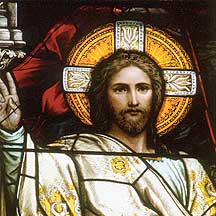
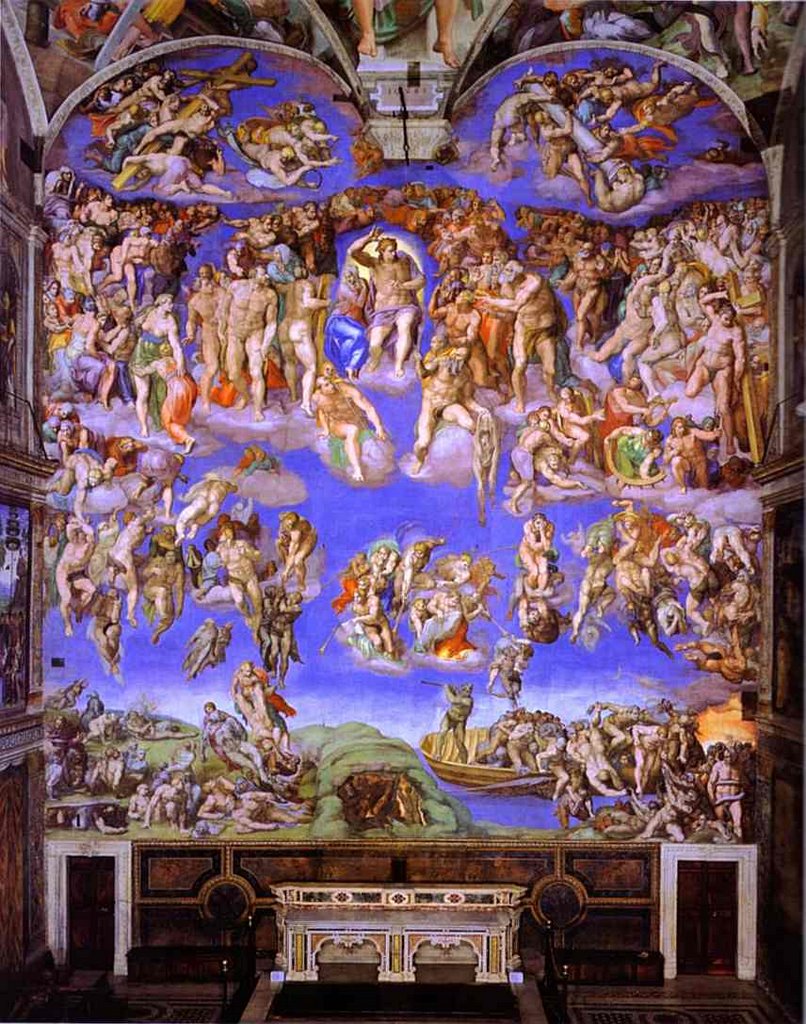


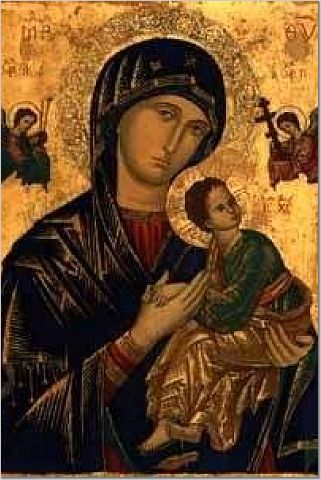



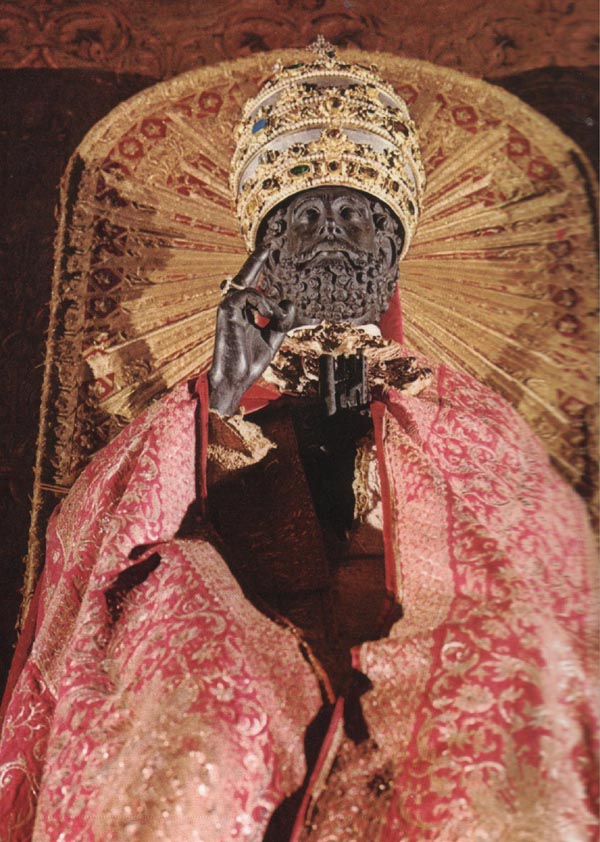
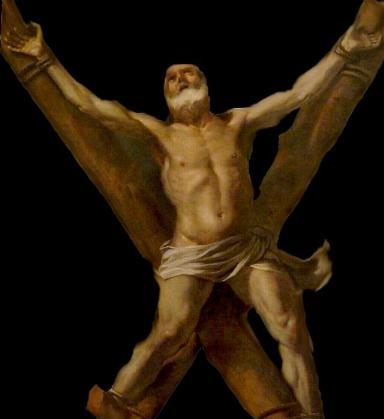

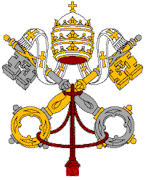


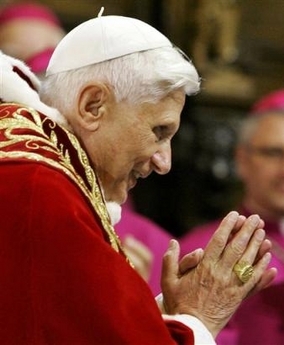






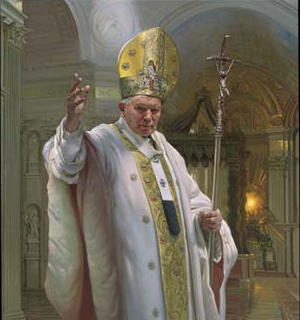
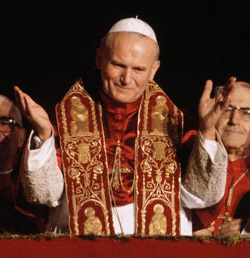
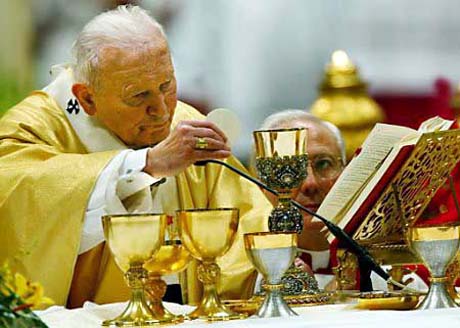
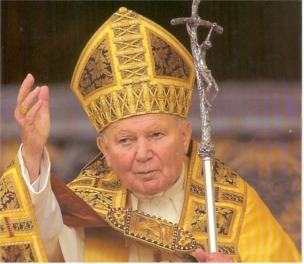






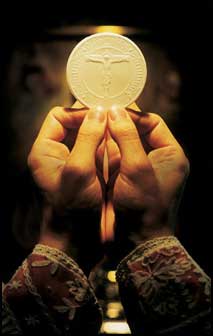
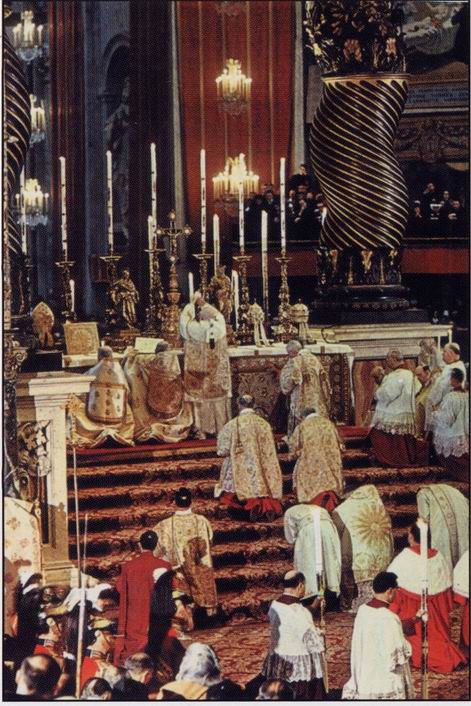



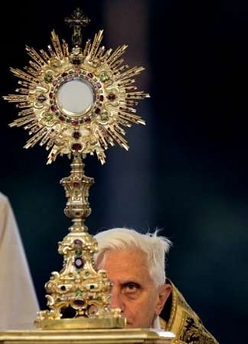


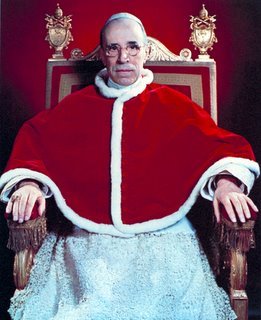




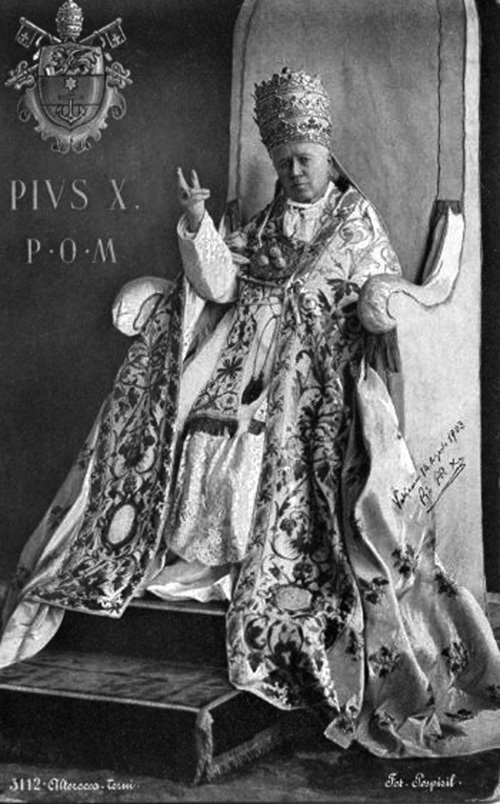










4 comments:
Wonderful pictures, Andrew!
I'd love to know more about the story behind the Shiite tribal leaders attending the Mass in Baghdad.
That sort of thing never seems to reach the headlines.
Excellent post! There's a vibrancy to your blog that makes it a quite enjoyable read.
Dearest Andrew,
Christ is in our midst!!!
Well, sff, in all logic, I suppose that things like Shiite leaders attending mass will never reach the headlines... After all, if its too good and noble, it gets boring and doesn't sell. Plus, coverage of an issue will probably "confuse the Muslim community in Malaysia" (as per our pagan Government's view).
Nevertheless, Andrew, I was hoping that you would probably expand what you've written about the Orthodox Churches to the Churches of the Eastern Rite. I am aware of some Greek Catholics (of the Russian/Ukrainian Rite) who use the Old Calendar as well. I met an Russian Catholic priest and the community in Singapore a few months back and it was a beautiful experience. The Divine Liturgy was just... divine. Pity why the Catholic Church never really publicised or endorsed its catholicity.
In Christ-God,
Collin
SFF, thanks for the encouragement. I'll try to post it soon, but I'm trying not to detract from the Jesuit post for now. Look out for it.
Josephus, many thanks for the encouragement!! =)
Collin, will do. Did plan something and it's in draft. But no time yet. The Eastern Churches in communion in Rome have wonderful traditions, such as burial of their Primates upright and seated! =) Watch out for it.
I have great respect for these Churches and their saints, especially St. Josaphat, martyr for Holy Unia whom I especially venerate. I am also devoted to the art of iconography as a means to foster prayers. More on this, as well as images of my Greek Chapel as well. So many riches to share!
Post a Comment